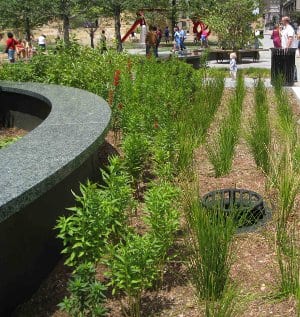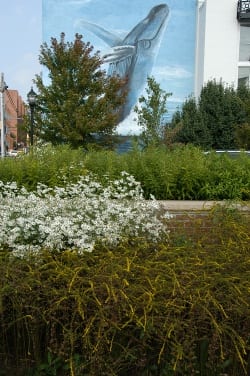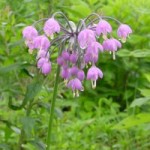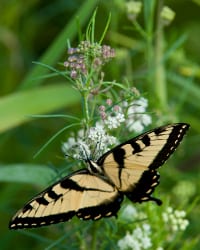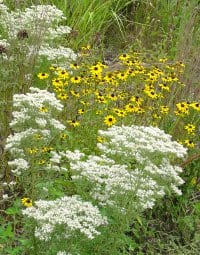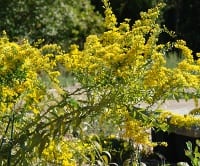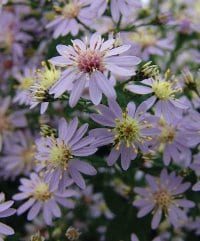by Claudia West
Imagine yourself strolling along a typical metropolitan street. What vegetative characteristics might you experience? Are window boxes and containers bursting with seasonal color? Do low growing sedges tickle your ankles as you walk past a lushly planted tree pit? Are you enticed to run your fingertips through the Panicum seed heads as you enter the town square? Or, are mature tree canopies protecting you from polarizing heat?
Sadly, the reality of such a stroll commonly unveils plants distressed from degraded soils, heat islands, and pollution. Urban spaces face a plethora of undesirable conditions for growing and maintaining horticultural harmony. Human and environmental activities can severely impede our ability to design, install, and maintain a successful urban landscape. However, these sites will always offer opportunities for encouraging human interaction and improving overall aesthetics, function, and ecological health.
From the Ground Up
The initial challenge of most urban sites is soil. Typically characterized by elevated pH and a high intensity of disturbance, these soils tend to be shallow, compacted and often tainted by road salt, heavy metals and hazardous substances. In general, urban soils lack organic matter and vital microorganisms required to support flora commonly selected for these areas.
Creating urban landscapes using native plants restores the ecological function and value. The vigorous root zones of our native plants offer adaptable solutions and a means for improving soil quality and structure. Our urban streetscapes, city parks, regional greenways and vegetative stormwater facilities are ideal spaces for incorporating native plant communities. Native plants help to capture and infiltrate stormwater thus improving water quality while providing habitat and biodiversity. The biggest benefit: they complete the picture by enhancing the aesthetic values of urban neighborhoods.
Now, imagine yourself walking along that same metropolitan street mentioned earlier. This time, is your attention drawn to a bounty of color offering exciting biodiversity? Do the plants stand proudly in a rain garden or are they gracefully sweeping through a median? Is there a riot of pollinator activity amongst the flowers? Are these the sights, sounds and fragrances you were admiring and breathing in earlier?
Identifying Tough Plants
So who are these tough, reliable, and forgiving plants? The following 10 perennials are ready to stand up to your greatest environmental design challenges; they have the attributes to overcome the aforementioned impediments. They are tough as nails and increase biodiversity all while looking stellar in the landscape.
Naturally adapted to rocky and gravelly soils, this bulbous native will thrive on sunny and dry sites without irrigation. In mid-summer the delicate, light-pink flowers offer pollen and nectar to countless insects. Undesired by deer, Nodding Onion should be added to massed plantings of drought tolerant grasses like Bouteloua curtipendula or used in combination with Ruellia humilis and Pycnanthemum flexuosum.
Add ecological value to our cities by including this important food source for the Monarch Butterfly larvae. Horsetail Milkweed loves poor and dry soils and blooms later than most other Asclepias. If conditions are favorable, this attractive native quickly spreads by rhizomes and creates an attractive arrangement with ground covers such as Bouteloua gracilis ‘Blonde Ambition’ or Eragrostis spectabilis.
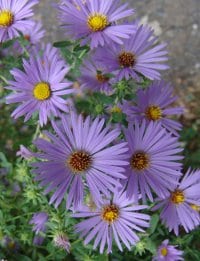 Aster oblongifolius ‘Raydon’s Favorite’ and A. oblongifolius ‘October Skies’
Aster oblongifolius ‘Raydon’s Favorite’ and A. oblongifolius ‘October Skies’
This native Aster evolved on calcareous and dry sites and is naturally adapted to high pH levels. Its long bloom period, from late summer until frost, supports a whole host of pollinators during the late growing season. The cultivar was selected for its compactness and many flowers. It’s a beautiful companion plant to Solidago ‘Solar Cascade’ or Eupatorium hyssopifolium.
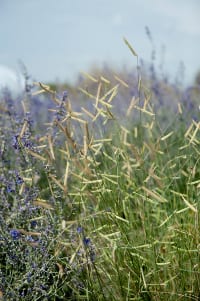 Bouteloua gracilis ‘Blonde Ambition’ and B. curtipendula
Bouteloua gracilis ‘Blonde Ambition’ and B. curtipendula
These two members of the genus Bouteloua are extremely drought tolerant groundcovers. They thrive in shallow soils and will tolerate a moderate amount of road salt. Their attractive seeds provide architecture to the winter landscape; and they are charming when used in combination with taller perennials. Also, consider Schizachyrium scoparium. When the weather outside is frightful, this gem brings a much needed accent of warm winter color into our cities.
The Hyssop-leaved Thoroughwort is an artist at covering bare soil. It scoffs at compacted soils, plus its unique ability to seed into disturbed areas and its extreme drought tolerance make it a must-have on your urban plant shopping list. Dense clouds of white flowers offer exceptional ecological value while the finely textured foliage looks wonderful in combination with tall and sturdy perennials including Pycnanthemum muticum and Solidago ‘Solar Cascade’.
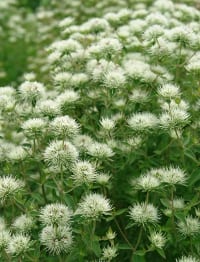 Pycnanthemum muticum & Pycnanthemum flexuosum
Pycnanthemum muticum & Pycnanthemum flexuosum
Allow me to introduce the king and queen of metropolitan gardening. Hardly any other native perennial forms a denser layer of semi-evergreen basal leaves and rhizomes than that of Pycnanthemum muticum. Its greatest potential lies in preventing erosion and covering disturbed ground. This native Mountain Mint is a strong grower, and when conditions are optimal it will out-compete weeds. Attractive silvery bracts persist until late winter; pollinators just can’t get enough. Pycnanthemum flexuosum is less competitive but just as tolerant of poor soils and drought. Its aromatic leaves provide an end of the season surprise with deep red fall color. Both work beautifully in combination with Panicum virgatum ‘Shenandoah’ or Aster oblongifolius ‘Raydon’s Favorite’.
Ideal for traffic islands and roadside planters, this native golden rod will thrive in the hot and dry urban climate. A dense network of rhizomes helps this perennial to form thick stands of elegantly arching yellow flowers in late summer. Worth mentioning is its tolerance to high pH levels and road salt. It can be combined with Aster oblongifolius ‘Raydon’s Favorite’ and Schizachyrium scoparium.
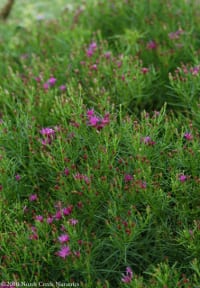 Vernonia lettermannii ‘Iron Butterfly’
Vernonia lettermannii ‘Iron Butterfly’
The name says it all. This Arkansas native will thrive in mesic urban soils but tolerates moisture as well. Iron Butterfly has a tight, compact habit, but it is its vigorous growth rate that makes it a great choice for poorly draining sites. Outstanding ecological value is provided in late season when the star-like purple flowers appear. Attractive, finely cut foliage looks great in combination with Deschampsia cespitosa or Liatris spicata.
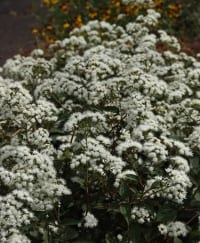 Eupatorium rugosum ‘Chocolate’
Eupatorium rugosum ‘Chocolate’
Brighten up shady and dry areas with this tough native perennial. Pure white flowers appear in autumn and contrast nicely against rich, burgundy foliage and deep shiny purple stems. This species is very tolerant of poor soils and will grow in sun with adequate moisture. It is deer resistant and can be combined with Aster cordifolius ‘Avondale’ or Solidago caesia. Other suitable companions are Chasmanthium latifolium and Aster divaricatus ‘Eastern Star’.
Absolutely covered in light blue flowers in early fall, this very drought tolerant native woodland Aster is an essential food source for late season pollinators. It will thrive in shaded areas in combination with Erigeron pulchellus var. pulchellus ‘Lynnhaven Carpet’ or Pycnanthemum muticum.
About the Author
Claudia West grew up in Germany on the property of Blumenhaus Pfeifer, a 20 hectare (50 ac) farm in Meerane, Saxony, and a family-owned landscape nursery business which specializes in garden design and perennial, woody, and cut flower production. Claudia holds a Master’s of Landscape Architecture from the Technical University of Munich, Germany. Previously, Claudia served as a design consultant for Wolfgang Oehme/Carol Oppenheimer: Landscape Architecture, Organic Gardens, and was employed at Bluemount Nurseries and Sylva Native Nursery & Seed. Her extensive background in horticulture, ecology, environmental restoration and sustainable plant combinations bring a wealth of knowledge to North Creek Nurseries’ Ecological Sales team. Claudia may be reached at claudia@northcreeknurseries.com.

